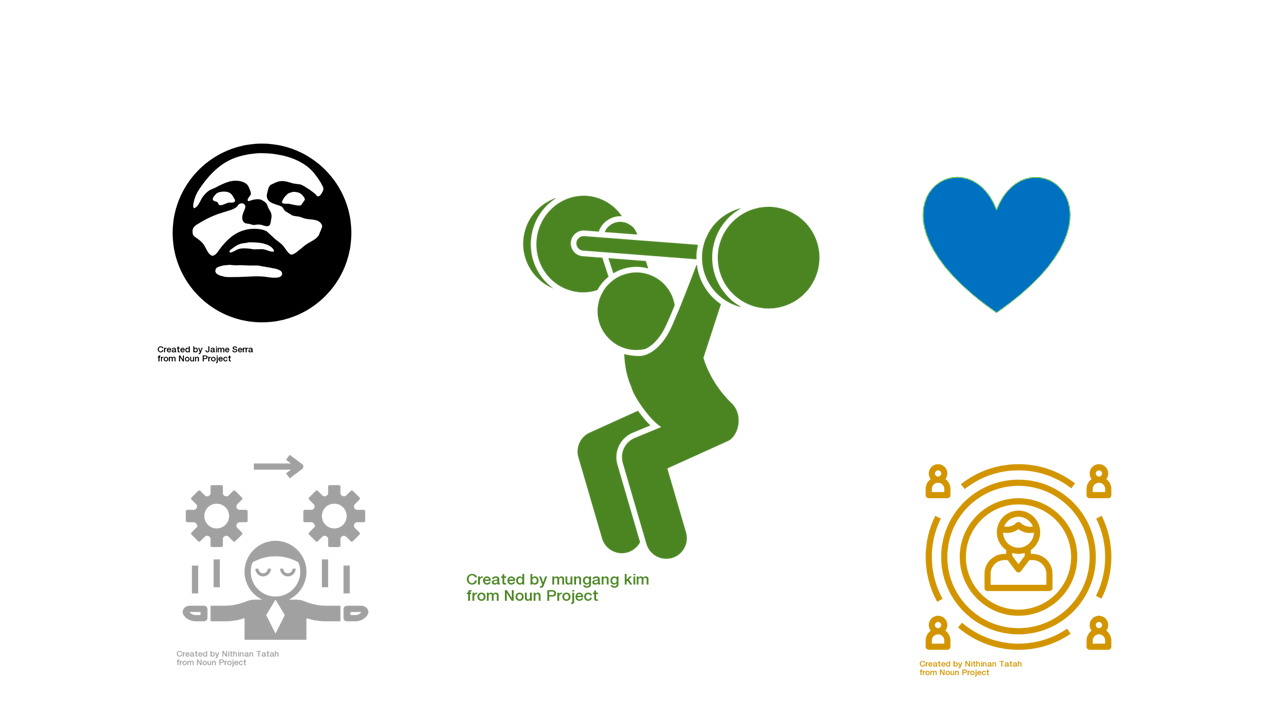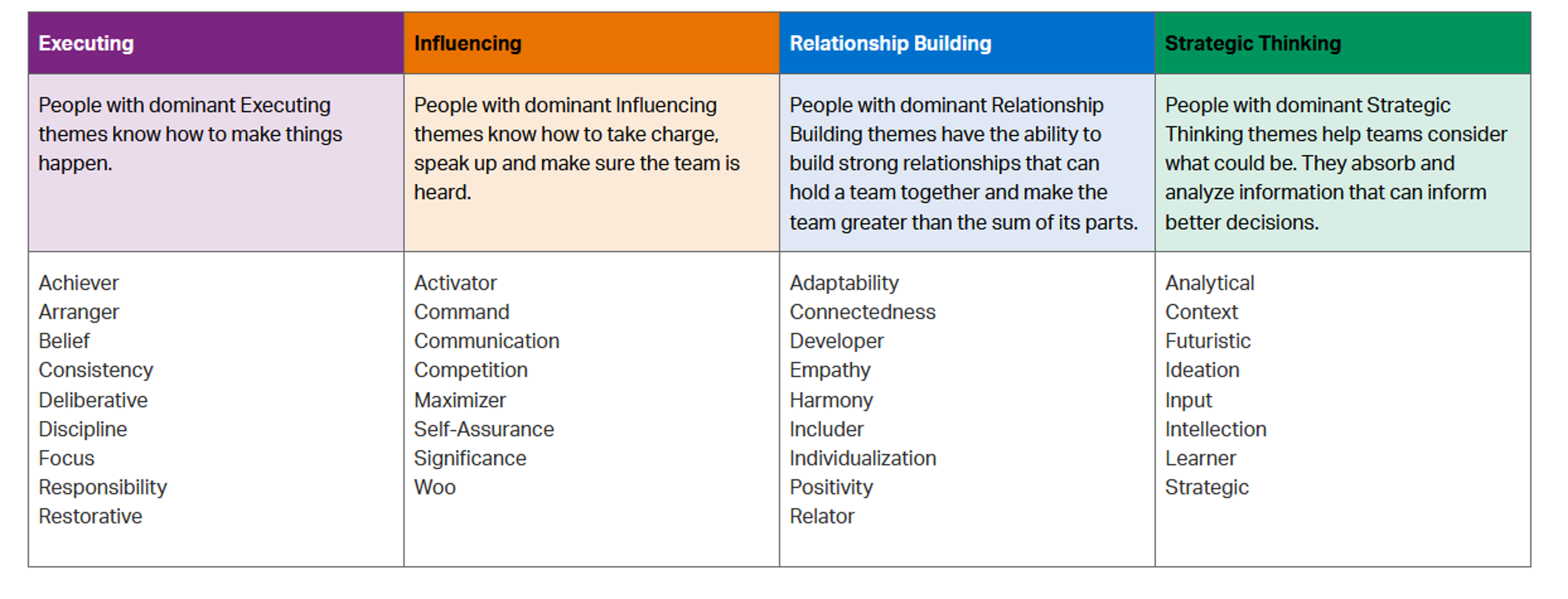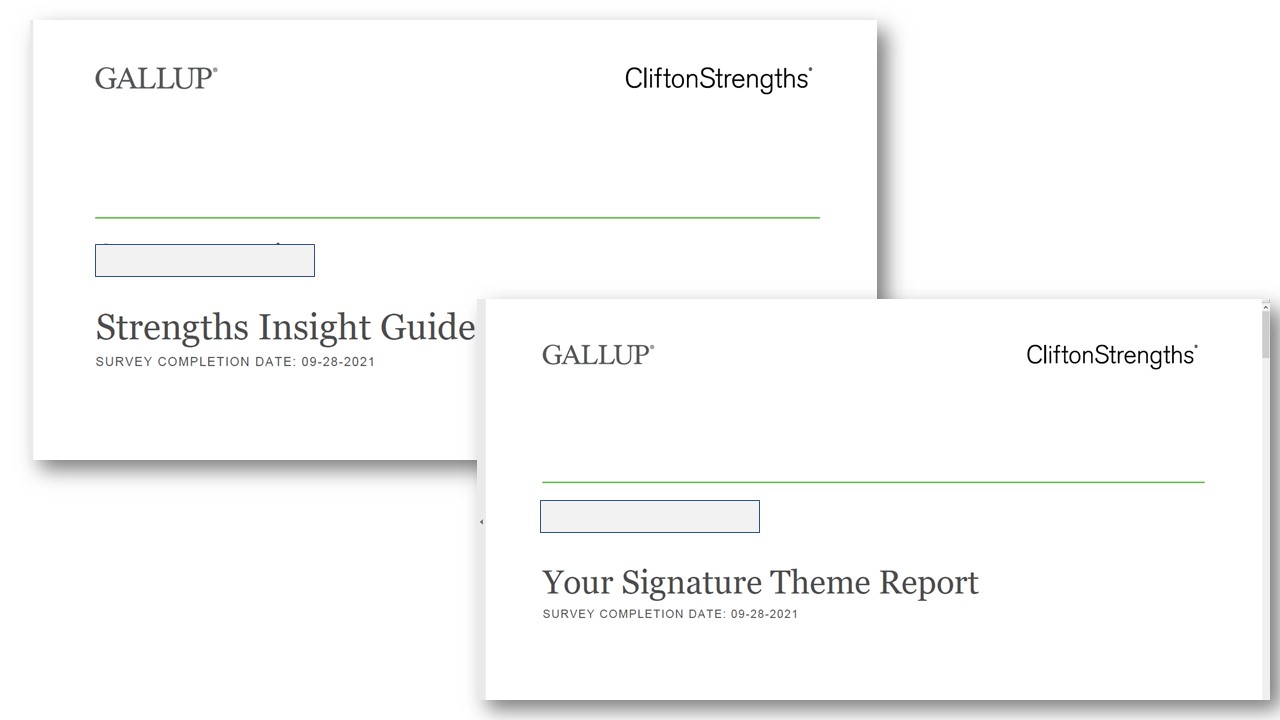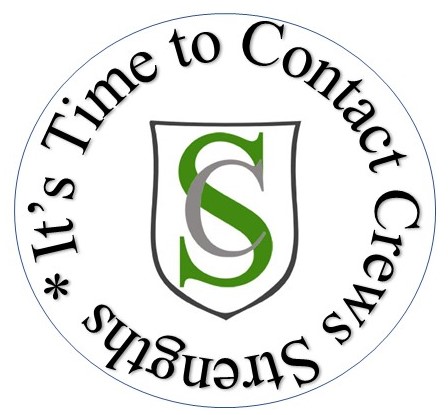Blog
It’s Time to Put Your Resume to Work: Part 10.
Talents, Strengths and Your Resume

Why do you include any particular bit of information on your resume?
- Why do you include information about your education?
- Why do you mention a particular work success versus some other one?
- Why would you include your involvement in a volunteer activity?
You include them to:
- Show you meet educational requirements.
- Help the hiring manager imagine you thriving at their empty workstation.
- Highlight your successes, especially stuff not covered elsewhere.
Generally, you include and highlight things which make it easier for the hiring manager to see you in the position that needs to be filled. Thinking about what will pique the interest of the hiring manager, what could you add to your resume or cover letter?
With that in mind, should you include your CliftonStrengths (StrengthsFinder) results on your resume? Why? If you don’t know what I’m talking about, please read on. It is something you need to become aware of.
The StrengthsFinder, or CliftonStrengths assessment, has been taken by more than 26 million people worldwide. Based on Donald O. Clifton’s research on success and human potential it is best understood in light of Clifton’s query “What will happen when we think about what is right with people rather than fixating on what is wrong with them?”.
StrengthsFinder Explained (super simple version)
The StrengthsFinder assessment helps people clarify their most important talents out of a list of 34 of them. While many only receive their top five results, people actually strongly apply 8 to 12 of them. Since the top five Strengths reveal important information, people frequently refer to their unique profile by the names of their top 5 Strengths in order. For instance, I am Ideation – Strategic – Input – Context – Learner. This combination in this order is unique to me, just like yours are to you. How unique? The possibility of any 2 people having the same top five Strengths in the same order is one in 33,000,000. Pretty unique, eh?

For comparison, there is about a one in 2,000,000 chance of being hit by lightning.
Preparing your resume, you tend to think of your skills. Don’t confuse talents with skills. Skills are the stuff you know how to do. Talents are your natural hows, whys, and motivation. When you work to develop talents, they become Strengths.
Strengths on Your Resume?
Can your hows, whys, and motivation be valuable and usable in your resume?
In your resume, you include, your experience performing tasks that highlight your skills, from creating websites to operating a forklift or juggling chainsaws, if they apply to the open position. So, shouldn’t you include information that highlights your natural inclination to learn, lead or solve problems?

Remember, the point of a resume is to interest the hiring manager to interview you. If your talents make you a strong candidate, then they improve your likelihood of getting some one-on-one time with the hiring manager.
If you haven’t already taken the assessment, drop me an email, to acquire a code to take it.
Show Your Strengths. Don’t Tell Your Strengths.
Do not just list the names of your top 5 strengths on a resume. Here are some of the reasons.
First, not everyone is familiar with the CliftonStrengths. Including “My top five StrengthsFinder strengths: Responsibility – WOO – Learner – Competition – Positivity”, isn’t likely to help the hiring manager visualize you sitting at that desk on the 37th floor. It is about as elucidating as, “I am a highly motivated, positive team player, with a strong work ethic” (or “I love my mom and puppies and ice cream, and I got straight A’s in junior high”). Good for you, but what is in it for the hiring manager.
A hiring manager with some Strengths’ knowledge may have a vague idea what those 5 Strengths mean. What he won’t know, is what you do with them.

As the table of all 34 Strengths shows, common words are used to identify particular patterns of thought, feeling or action. A Strength’s name may not correspond to its dictionary definition. For instance, Empathy is a Strength which implies great emotional understanding, including, reading people’s emotional status. Not what most of us think of when someone says she is empathetic.
The uninformed hiring manager may misread what the Strength is describing. The slightly familiar hiring manager may mistakenly reach a conclusion equating your version of the Strengths with the version of another employee who shares none of your other talents. Confusion can occur. Confusion seldom leads to an interview.
The only case where you might introduce your Strengths with just their names is if you know that you are applying to a company well versed in the Strengths. However, you should never stop there.
Just like you describe your skills by including them as part of a powerful action verb driven bullet points, describe your Strengths the same way.
As has been stated in most of the posts in this series, never include anything in your resume that the hiring manager has to figure out. Address their needs directly. If the job listing states “Five years of experience working with XYZ accounting software.”, you could respond by stating: “Expert in all elements of XYZ software starting in 2012, including implementation of update modules 10.1 through 14.7.”
The Strengths equivalent might serve if your research indicates dysfunction in the potential employer’s office. Example: “Elevated department status from on probation to President’s Award in less than two years, by leading managers and staff to more effectively communicate and resolve problems.” In an interview you can unpack your “Restorative” Strength, which you intend to apply to help with similar situations.
The fact that you won the spelling bee in fourth grade is an admirable achievement with little bearing on your likely future success. The same is true with your Relator Strength if building close personal relationships is not one of the hiring manager’s needs. You can and will apply that Strength in your next position, but it may not be germane to getting an interview.
A resume serves one purpose. That is to get an interview. It does this by helping the hiring manager imagine the person described in your resume (you) in the slot she has available.
The StrengthsFinder assessment reveals your unique talent profile. It provides a description of yours hows, whys and motivation, helping to identify the innate way you successfully interact with the world.
Using Your StrengthsFinder Results on Your Resume
If you have taken the StrengthsFinder assessment, get your results out. If you still need to take the assessment, reach out and then when you have your results, get them out.
You receive two reports when you complete the assessment. They are titled Your Signature Theme Report and Strengths Insight Guide.

The Signature Theme Report provides textbook descriptions of your top 5 Strengths. Every person who has a particular Strength gets the same description. Your description of, say, Strategic, is the same as mine in the Signature Theme Report.
The Strengths Insight Guide is personalized. When you take the assessment, it knows your full 34 Strengths. A simplified explanation of the algorithm, for the Insight Guide, is it generates statements, from 5000+ possibilities. For a particular Strengths, say your #3, the statements generated are based on a combination of your other predominant Strengths (#1-10) modified by the non-influential ones (#29-34). It’s a lot more complex than that, but you get the idea.
Preparing a Strengths’ Bullet Point
Both reports provide valuable information. The best way to understand what Strengths looks like in your life, read through both reports. Then highlight/underline any sentences, phrases or even just words that resonate to you.
Next, take the highlighted/underlined phrases and think of examples which illustrate successful situations that illuminate that statement. For example, in the Insight Guide, under the Connectedness Strength, you might highlight the following: “. . . you create peace within groups or between people by pointing out links between them.” This is your Connectedness, (recognizing interconnection) mixing with Restorative (solving differences between people).
Show the hiring manager your abilities “creating peace between people”. Example: “Successfully brought union, non-union, management and vendors to the table, aligned by loyalty to the company, to negotiate a three-year contract.” That bullet point illustrates the success your Strengths generate whether the recipient is an expert in StrengthsFinder or has never heard of it. If the position you are applying for requires negotiating union contracts, this is likely to make you a prime interview candidate.
Strengths have great potential in your life, and they can have great potential to indicate your future success in a job. Your Strengths reveal themselves in the way you interact with the world. Telling those stories of how you succeed by being you can improve your odds of getting an interview.
If you need help discovering your Strengths and then applying them in your job search, please contact Crews Strengths. Remember, “It’s Time to Put Your Strengths to Work”.
NOTE: Gallup, the company that owns the assessment, uses the official name, CliftonStrengths, to honor Don Clifton’s legacy. Because so many people are familiar with the book, StrengthsFinder 2.0, the names, StrengthsFinder and CliftonStrengths, continue to be used synchronously.
The suggestions and advice given in the articles about resumes provides a lot of information to help you put your resume to work. Please let me know if you have found it helpful. To make sure others have access to this valuable information, please go back to this article in LinkedIn and like and comment on the actual post where the most people are likely to see it. Thanks for your kindness.
There is still more to come on resumes and Strengths and the whole job search experience.
If you need to catch up on the earlier posts in the “It’s Time to Put Your Resume to Work” series, here is the way to get to that valuable content:
- Part 1 – Background information about resumes.
- Part 2 – Parts of a resume and what information ought to be in them.
- Part 3 – The a la Carte Resume or customizable resume, a method to quickly create a resume that responds to the “demands” of any job listing.
- Part 3a – BONUS short post about the proper length for a resume
- Part 4 – Discover the potential employer’s language and then use it in your resume.
- Part 5 – Creating a Universal Resume (when you don’t have All the Facts.
- Part 6. Avoiding the Mundane, Boring, and Useless in your resume.
- Part 7. What to Do When You Don’t Meet All the Requirements.
- Part 8. How Dressed Up Does Your Resume Need to Be?
- Part 9. Helping Your Resume Avoid the Trash.
Previous Posts
- “It’s Time for You to Ask the Questions!” - August 8, 2024
- What “Superpowers” are Hiding in Your Toolbox?: - May 29, 2024
- It’s Time to Put Your Strengths to Work for Your Interview – Part 4 - October 16, 2023
- It’s Time to Put Your Strengths to Work for Your Interview – Part 3 - August 21, 2023
- It’s Time to Put Your Strengths to Work for Your Interview – part 2 - July 20, 2023
- It’s Time to Put Your Strengths to Work for Your Interview - June 22, 2023
- It’s Time to Put Your References to Work - February 14, 2023
- It’s Time to Work Around Your Weaknesses - November 15, 2022
- It’s Time to Put Your Skills, Talents, Strengths (and even Weaknesses) to Work! (Once you figure out what they are). - October 13, 2022
- It’s Time to Put Your Strengths to Work: Why Hire a Coach? - August 1, 2022
- It’s Time to Put Your Strengths to Work: Rejection and the Job Search - June 25, 2022
- No One Deserves to HATE Their Job! : Your Solution to the “Great Resignation” - May 23, 2022
- It’s Time to Put Your Strengths to Work: Strengths and the Reentry Career Alliance Academy - March 3, 2022
- It’s Time to Put Your Resume to Work: Part 11. An Inventory of Your Career: Resume as Assessment - February 3, 2022
- Have Yourself a Merry Little Job Search: - November 23, 2021
- It’s Time to Put Your Resume to Work: Part 10. - October 21, 2021
- It’s Time to Put Your Resume to Work: Part 9 – Avoiding the Trash - August 25, 2021
- It’s Time to Put Your Resume to Work: Post 8. How Dressed Up Does Your Resume Need to Be? - July 20, 2021
- “It’s Time to Put Your Resume to Work” : Part 7: What to Do When You Don’t Meet All the Requirements - June 24, 2021
- “It’s Time to Put Your Resume to Work”: Part 6. Avoiding the Mundane, Boring, and Useless - May 26, 2021
- “It’s Time to Put Your Resume to Work”, Part 5 – Creating a Universal Resume (When you Don’t have All the Facts) - May 5, 2021
- “It’s Time to Put Your Resume to Work” – Part 4: Finding the Words (literally) - April 7, 2021
- BONUS – “It’s Time to Put Your Resume to Work”- Part 3a : What is the Correct Length for Your Resume? - March 25, 2021
- “It’s Time to Put Your Resume to Work”- Part 3 : The a la Carte or Customizable Resume - March 16, 2021
- It’s Time to Put Your Resume to Work – part 2 - February 9, 2021
- It’s Time to Put Your Resume to Work – part 1 - January 27, 2021
- Strengths Help You Hear the Music - October 20, 2020
- StrengthsFinder & the Ancient Philosopher - September 3, 2020
- StrengthsFinder Domains: A View of Your Strengths from 50,000 Feet - July 20, 2020
- Talents are Your Edge in a Job Search - June 25, 2020
- This Is Who You Are and That’s A Good Thing - May 22, 2020
- Introvert or Extrovert: A CliftonStrengths view - May 13, 2020
- Is It Time to Put Your “Superpowers” to Work? - April 10, 2020
- Who Are You? - April 3, 2020
